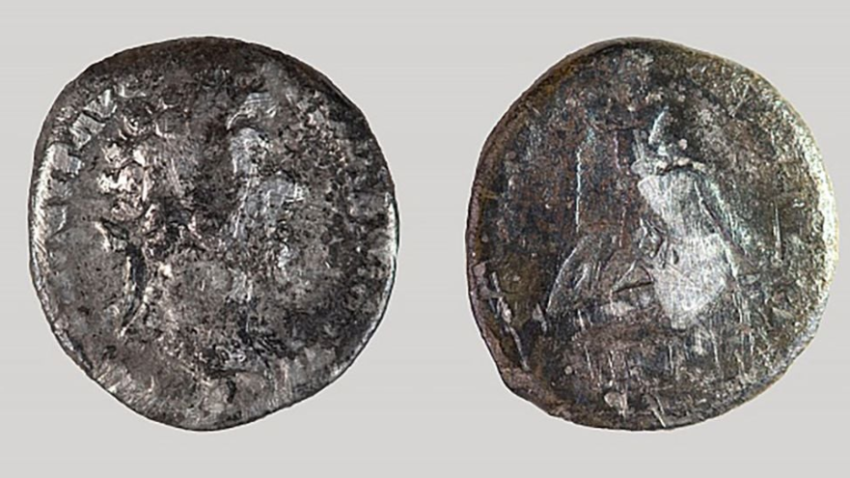An 8 year old boy named Bjarne found a silver denarius, a Roman coin minted 1800 years ago, while playing in the sandbox at his elementary school in Bremen, Germany.
The boy, now 9 years old, made the discovery last year, but the authorities announced it this year. This rare silver denarius was minted during the reign of Marcus Aurelius (161-180 AD).
“We are glad that Bjarne was so careful,” says Uta Halle, the Bremen state archaeologist. “The discovery is very special, because there have only been two comparable coin finds from the Roman Empire in the city of Bremen.”
Though much of what is now Germany once lay within the borders of the Roman Empire, Bremen did not, making the Roman coin especially rare and especially puzzling. Experts are unsure how it came to Bremen, but they have numerous possibilities. Any Roman coins that made their way that far north likely reached the area via barter, washed up in the River Weser, or as a souvenir carried by an auxiliary or other world traveler.
The denarius weighs about 0.08 ounces (2.4 grams), which is not very heavy. This is due to the fact that it was produced during a “period of coin deterioration,” in which the amount of silver used decreased due to inflation, claims Halle.
When Bjarne first discovered the coin, he was eager to learn more about the artifact. “It was round and shiny,” he says. His family sent photographs of the coin to experts, who wanted to see it in person. After a thorough examination, they were able to date it to the reign of Marcus Aurelius, who ruled from 161-180 AD (the last of Rome’s “Five Good Emperors”, Aurelius is known today for his work on Stoicism, “Meditations”).
Officials praised Bjarne for his “alertness and curiosity” and gave him two archaeology books at this month’s press conference. The child won’t be able to keep his findings, though. Such items are considered to be the government’s property under the law. Halle, who oversees the division for prehistory and early history at Bremen’s Focke Museum, expects that the coin will be put on exhibit there. “Such a coin has not been seen there,” she claims.
Bjarne, on the other hand, has no problem handing it over. “The coin will go to the Focke Museum, it can stay there and I can go and look at it whenever I want. Other people can look at it too.”
Bremen Culture Department
